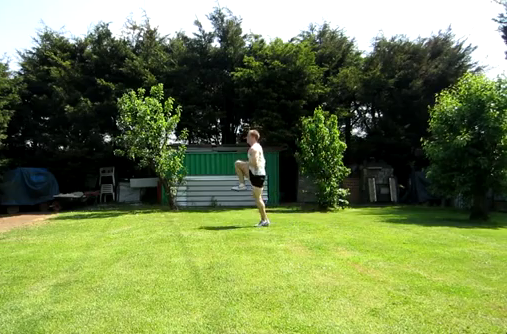Dynamic Warm Up
Dynamic Warm up – Why?
An effective warm up is designed to prepare an athlete for training or competition. As the warm up is often overlooked, this article will look to explore the benefits and reasons as to why warming up is essential to performance.
A warm up is a period that takes part before any main workout component. It looks to prepare the athlete both physically and psychologically and aims to increase muscle temperature, core temperature, and blood flow, all of which have numerous benefits before physical exertion. Warming up allows for:
• Faster muscle contractions
• Improvements in RFD (Rate of force development)
• Improvements in muscle strength and power
• Improved blood flow to active muscles
• Improved oxygen delivery
• Superior metabolic reactions
Out with the old…In with the new
Long gone are the days when static stretching was used as part of the warm up. It used to be incorporated as it was believed to enhance performance and reduce the risk of injury. However, numerous studies have shown that static stretching, pre or post exercise, have little effect on injury prevention or DOMS (delayed onset of muscle soreness). It is also worth noting that static stretching leads to numerous problems. These include:
• Decreased force production
• Decreased power performance
• Reduced running speed
• Decreased reaction speed and movement time
• Lowered strength endurance
It is clear from the list above that these problems are not going to help an athlete’s performance. So how can we prepare an athlete for training and competition?
The use of dynamic stretching has been shown NOT to elicit the same detrimental responses that static stretching does and so it should be the preferred choice during a warm up.
What makes a dynamic warm up?
Below is an example of a dynamic warm up that can be used before training or competition:
A good warm up should include a general warm up and a specific warm up. The general warm up should be made sport specific if used before sports training or competition. For example if about to play rugby, rather than simply jogging or cycling for 5 to 10 minutes, why not perform a few low intensity runs passing a rugby ball. This will provide the athlete with some sport specific movements and increase heart rate, blood flow, muscle temperature and respiration rate.
Following a general warm up, a specific warm up should be included. This part would include movements that are similar to the sport that is going to be performed. Dynamic stretching would be performed with stretches that gradually increase in range of motion and intensity. If the sport requires high velocity movements, then it becomes more important that the warm up caters for this. For example, football requires lots of sprinting, so after the dynamic stretching has been performed sprint and bounding drills will need to be included. It is vital that the warm up progresses slowly and moves to higher intensity drills as the athlete gradually prepares his nervous system for the main session.

